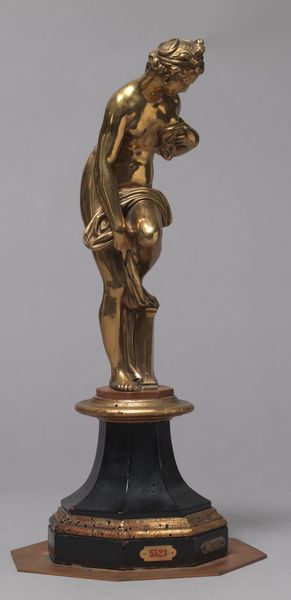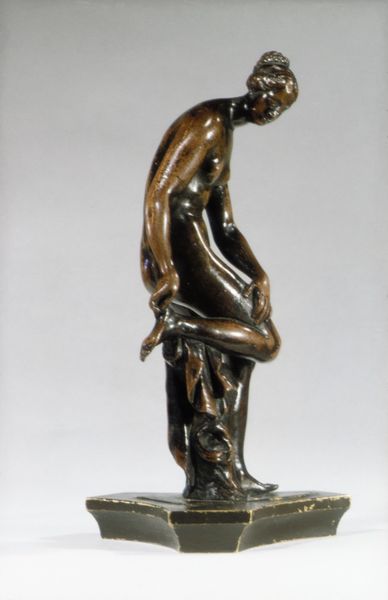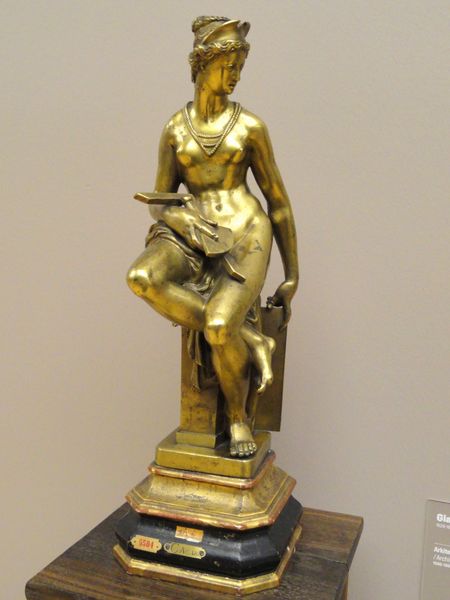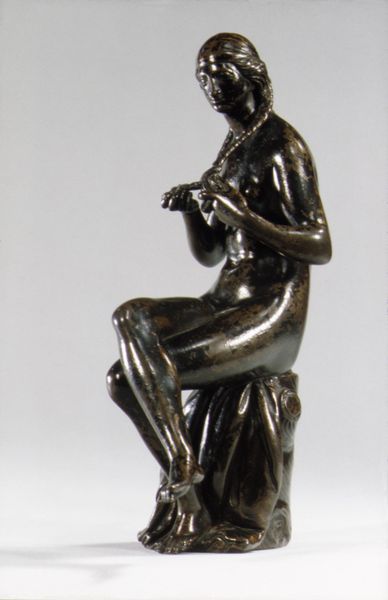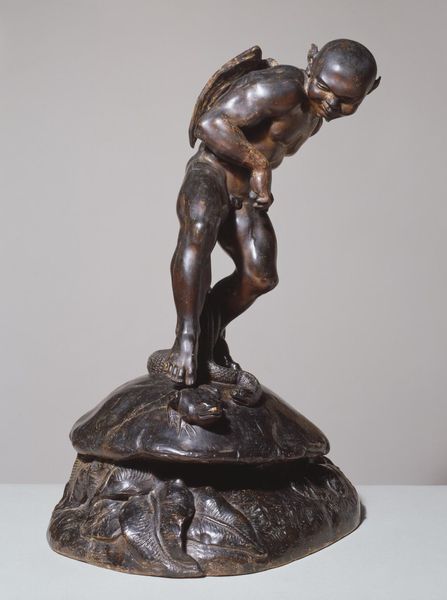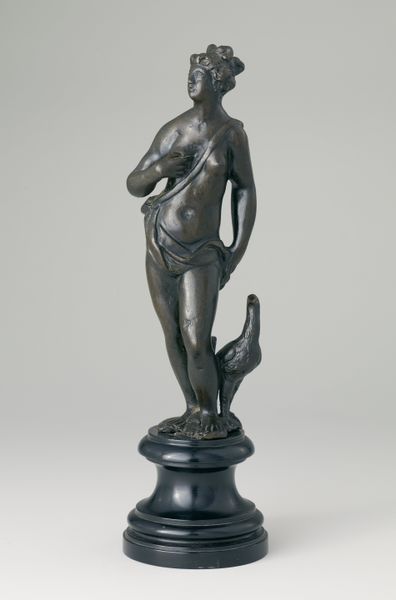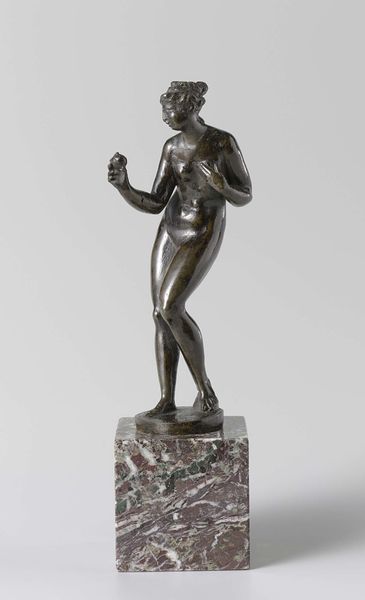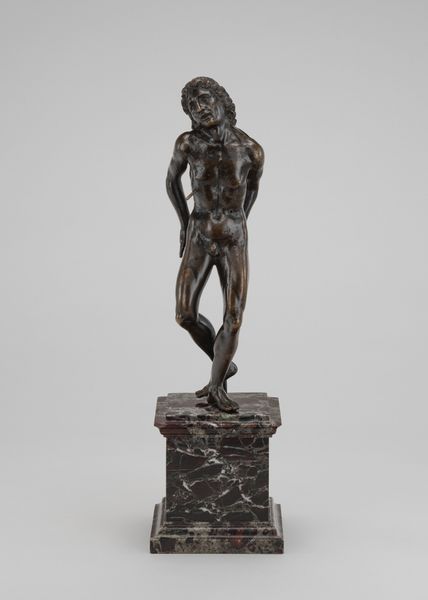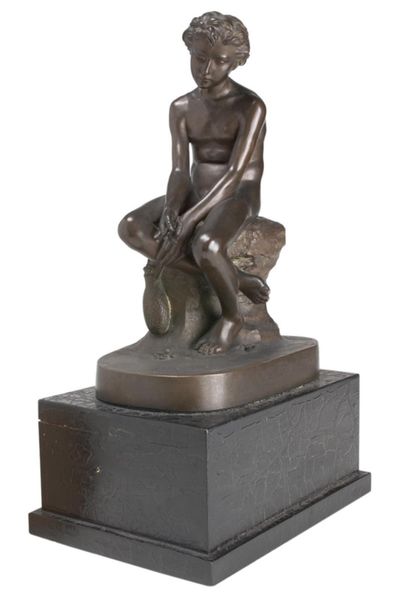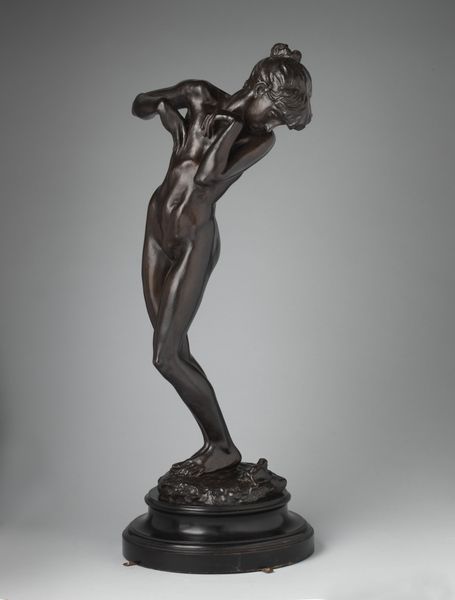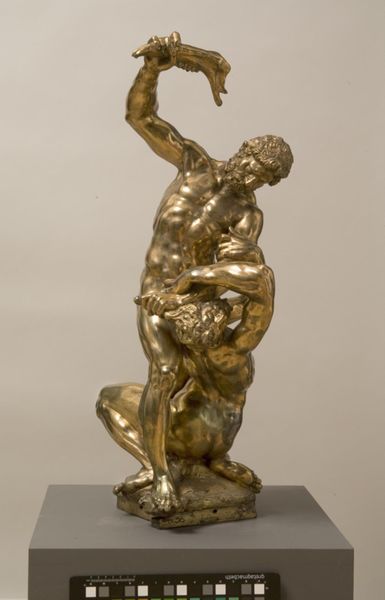
bronze, sculpture
#
stone
#
sculpture
#
bronze
#
mannerism
#
figuration
#
sculpture
#
nude
Dimensions: 35.5 cm (height) x 12.5 cm (width) x 14 cm (depth) (Netto)
Editor: This is "Architecture (or Geometry)" by Giambologna, made between 1580 and 1608. It's a bronze sculpture, and there's something striking about the smooth texture and how the light catches the curves. How should we approach such a complex and refined piece? Curator: Let’s consider this bronze in the context of Mannerist production. Look closely at the figure. Can you see how the surface is so expertly rendered, yet idealized? We need to think about the social value of bronze in this period and how the process of lost-wax casting allowed for these multiples to circulate among elite circles, broadcasting a particular image of power and taste. What kind of labor went into producing the model, then the cast, and finally, the chased surface? Editor: So, you’re saying it's not just about the beautiful figure itself, but about what the material represents and the many hands involved in making it? Curator: Precisely! Consider the availability of resources; bronze was a luxury. And the nude form referencing classical antiquity, now reproduced as a metal product, reflects an intentional engagement with craft to elevate certain artistic standards. Think about where and how such pieces were displayed. Editor: That makes me reconsider its inherent preciousness! The labour to obtain bronze in the first place… and that it's a symbol made of valuable material displayed to show a type of elevated status through this figure. Curator: And more so how "Architecture" becomes allegorical here. Do we consider the cost of producing buildings in this era? Labor of stone mining or brickmaking. Consider how such buildings became synonymous with status of owners. Editor: Fascinating! I now see that it encapsulates status, production, classical allusion, as well as human labor. Thanks, this broadened my perception! Curator: My pleasure! Reflecting on production offers invaluable insights into an artist's historical and cultural context.
Comments
No comments
Be the first to comment and join the conversation on the ultimate creative platform.
